Advice for Teachers Itching to Write Fiction
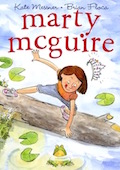 Kate Messner taught middle school for 15 years. During her last five years in the classroom, Messner also launched her writing career. Today she is the award-winning author of more than two dozen books for young readers, including picture books, nonfiction, chapter books (including the Marty McGuire series), and novels.
Kate Messner taught middle school for 15 years. During her last five years in the classroom, Messner also launched her writing career. Today she is the award-winning author of more than two dozen books for young readers, including picture books, nonfiction, chapter books (including the Marty McGuire series), and novels.
Her first book for teachers and writers, Real Revision: Authors’ Strategies to Share with Student Writers (Stenhouse 2011), focused on making the revision process accessible and fun. Her new book, 59 Reasons to Write: Mini-Lessons, Prompts and Inspiration for Teachers, is a friendly guide expressly written for teachers who dream of becoming published authors. Our review described the rich, collaborative content found in the book. Now we offer some tantalizing excerpts.
Reasons to Write
by Kate Messner
I meet lots of teachers, librarians, and readers when I travel for conferences and school visits. Many of you confide that you have stories you need to tell, poems you hope to write, and ideas you want to share. And then, many of you say, “I really want to write, but . . .”
I really want to write, but I can’t find the time.
I really want to write, but I don’t know how to get started.
I really want to write, but teaching leaves me exhausted at the end of the day.
I really want to write, but I’m afraid it won’t be good enough.
I really want to write, but . . .
Here is a secret about writing. If you really want to write, you can write. And now is the best time to begin.
If you’re a teacher or librarian who feels guilty about time spent away from your professional obligations, it may help to look at writing as an essential part of your work in being a teacher of writing. Because it is.
Before I became a full-time writer, I taught middle school English for fifteen years—a career I chose because I had loved reading books and writing stories as a kid. As an adult, I loved teaching writing just as much. For every new piece I assigned my students, I’d create a model for them, a sample essay or story or poem to help them understand the expectations for the assignment.
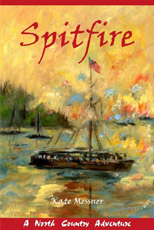
“Maybe you should write it yourself,” someone suggested, half joking. But that idea took hold, and I began scribbling ideas. Those ideas turned into research. I read piles of books and journals and letters, interviewed experts, and took part in a battle reenactment with a local maritime museum. After seven years of research, writing, revision, rejections, and more revision, a small regional publisher picked up my historical novel, and I finally had the story I’d wished for, to share with my students.
I also had a new outlook on teaching, because when I got serious about my own writing, everything changed. Suddenly, I wasn’t the all-knowing expert any more. I was struggling sometimes, agonizing over characters whose motivations didn’t ring true, details from history that completely derailed my plot, chapter endings that felt forced. I made the choice to bring all of those challenges into my classroom, to share my struggles with my students. It was huge, and I learned something important.
Writing for my students provided me with appropriate mentor texts to share. Writing with my students made me a mentor and a far better teacher. Because I was in the middle of the messy process, just as they were, I understood the feeling of wanting to finish but being stuck. I could relate to their fear and their failures—and that made all of our successes so much more to celebrate.
 Keeping a Writer’s Notebook
Keeping a Writer’s Notebook
When people ask me about how to get started writing, I almost always share the same two pieces of advice, whether those people are nine years old, or thirty-five, or seventy.
The first thing is this: Read. Readers develop an ear for what good sentences sound like and a sense for what makes a story work. Reading will make you a better writer.
The second piece of advice is this: Write. This may sound ridiculous, but you’d be surprised how many people talk about wanting to write without actually sitting down and doing it. A writer’s notebook is a good way to start. There are some very strict rules for having a writer’s notebook. Here they are:
Rule 1: Write in it.
Rule 2: There are no other rules.
A writer’s notebook can have a million different jobs. Some people scribble a few lines first thing every morning when they wake up. Some write throughout the day, at breakfast, in the grocery checkout line, waiting for the kids to get out of school. (See Kate’s post about bullet journaling.)
You can use a writer’s notebook to journal, to scribble story ideas, to record snatches of conversation or names you like or the way the leaves make swishing sounds in the wind. You get the idea. So if you don’t already have one, choose a notebook. And write things in it.
TODAY’S ASSIGNMENT: If you don’t already have a writer’s notebook, find one. Write something. If you need inspiration, try starting with “In my writer’s notebook, I hope to . . .”
Three-Column Brainstorming
As a reader, I’ve discovered that some of my favorite books have wonderful elements of the unexpected: familiar characters in unexpected settings, for instance, or traditional plotlines with unexpected twists.
As a writer, I’ve learned that the first idea I come up with for a new story might not be the most original one, so I’ve developed a three-column brainstorming strategy that helps me think outside the box and combine ideas in unexpected ways.
In the first column, I make a list of things I love, things that fascinate me, and things that scare me. All of these ideas can be great story starters. The ideas might be random and unrelated; those on a recent list included everything from ghosts to volcanoes to venomous snakes.
In the second column, I make a list of settings: places I know and love, places that fascinate or intrigue me, places I’d like to visit, and places I wish were real. Again, these are wildly diverse—the Everglades, outer space, the circus . . . you name it.
In the third column, I make a list of possible genres, moods, and themes—big ideas I’d like to explore. Column three brainstorming might include words such as mystery, thriller, friendship, ghost stories, secrets, humor, and more. Figure 2.5 shows a sample brainstorming chart.
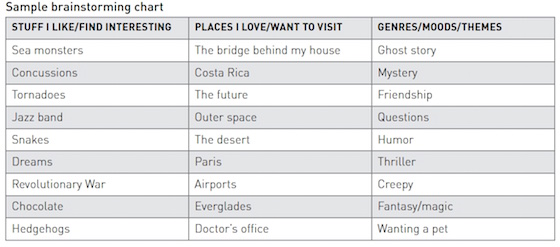
TODAY’S ASSIGNMENT: Make your own three-column brainstorming chart. Then, choose an idea from the first column and play around with possible settings, genres, and themes. Which ideas rise to the surface?
Writing Scared
It’s impossible to be a new writer without feeling flashes of fear, worry that the work won’t be good enough or that we have no business writing at all. This is where you’re probably expecting me to say, “Don’t be afraid” or “There’s no reason to be scared.” But I’m not going to say that.
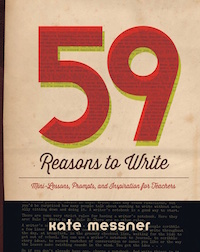
You see, there are two kinds of fear. The first kind keeps you safe from things that might cause you real and imminent harm.
My son and I encountered this cottonmouth while we were hiking in the Everglades a few years ago. We were scared, and we quickly identified our fear as the kind that saves you from danger. With this kind of fear, it’s good and healthy to act and run away to avoid venomous bites and other potentially fatal things.
But there’s another kind of fear—the kind that we feel when we’re about to exceed the artificial limits we’ve set for ourselves. When we’re about to step outside of our cozy little boxes and try something new. Something that’s scary because we might fail. And what will people think?
I learned a lot about this second kind of fear in March 2012, when I gave a TED Talk at the organization’s annual conference in Long Beach. There were fifteen hundred people in the audience, including CEOs of huge companies, inventors, producers, engineers, a former vice president, and other leaders in just about every area imaginable.
Kate Messner’s 2012 animated TED talk on world building in fiction
has garnered more than a million views online.
One of the other speakers was Bill Nye the Science Guy, who said something that I am going to remember for the rest of my life. He told one of the other anxious speakers, “If you weren’t nervous, it wouldn’t be worth doing.” And he was right. I was terrified when I stepped onto that stage. Absolutely terrified. It was extremely uncomfortable. But I learned so much from the experience, and I wouldn’t trade it for anything.
The kind of fear I was feeling is not the kind we should avoid. It’s the kind we should seek, because it gives us opportunities to be brave and grow. In fact, during our first summer of our Teachers Write camp, writer-teacher Colby Sharp reminded me of a line from Linda Urban’s wonderful novel Hound Dog True: “You can’t have brave without scared.” It’s true.
TODAY’S ASSIGNMENT: Often, naming our fears and bringing them out in the open makes them feel less daunting. So spend a few minutes reflecting on this prompt: Sometimes, writing scares me because . . .
The twist of anxiety you feel about sharing your writing? Think of it as a big, huge billboard in your heart that says, “GO, YOU!! YOU ARE DOING SOMETHING AWESOME AND NEW!” And after you do the new awesome thing, you will never be quite the same. Your world will be a little bigger. And this is good. So go on now. Be scared. Be brave. And write.
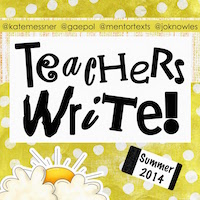

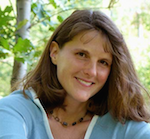
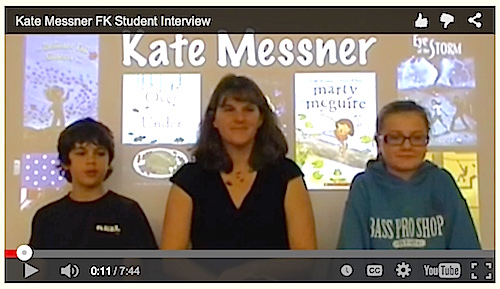
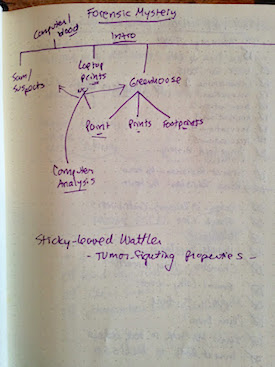






























I’m a teacher who has five unfinished/unpolished manuscripts sitting on my hard drive and dozens of other ideas in my head. I love success stories such as these.
Thanks a lot for your kind and worthy words. I am a Jordanian MA English Literature student which means that I am not a native speaker although I am studying English.
I always try to improve my English writing. Here, in Jordan, we study England but we don’t practice it either speaking or writing for enough time. According to writing, what your kind advice to improve my writing?
Best regards and thank you again for your encouragement.
Publisher ?
Your ideas really inspired me to start writing the children’s book I have been talking about for years. I will start my 3 column chart TODAY!
Thank you for putting this out there. I agree with your opinion and I hope more people would come to agree with this as well.